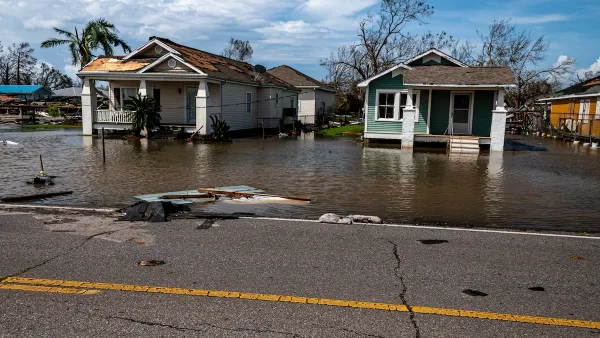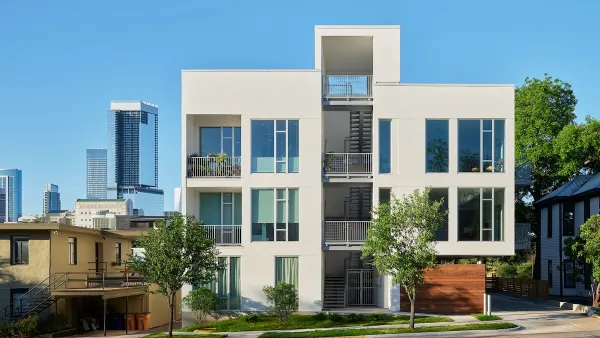Austin is pushing its economic development policy to go beyond chasing the big deal.
According to Andy Borowitz, the city of Austin needs help. “In a deepening humanitarian crisis, residents of the city of Austin report that they are completely surrounded by Texas, a situation that locals are calling ‘dire,’” he wrote in The New Yorker, riffing on Austin’s reputation as a “laid-back” hub for alternative music, film production, and technological innovation in an otherwise conservative state—a reputation that attracts an estimated one hundred new residents daily.
But perhaps the more significant way Austin is currently distinguishing itself from the rest of Texas, and indeed the rest of the country, is its economic development policy.
Chapter 380—A Long Process
Austin is everywhere touted as an attractive place for businesses. It boasts a steadily growing population that is largely college-educated—an estimated 46.7 percent according to 2013 American Community Service data—and, perhaps most enticing to the private sector, it is centrally located in Texas, a state with anti-union laws that does not tax personal income.
But it has seen its share of business cycles. Austin’s current economic development policy can be traced back to 2003, in the wake of the dot-com implosion. Austin had just seen the end of a decade of extraordinary growth. Per capita income had increased from $18,092 in 1990 to $32,039 in 2000, and the average price of a home had skyrocketed from $87,600 in 1990 to $199,500 by 2003. A fast-growing population, the rapid expansion of businesses, and significant investment in technology-related industries and Internet start-ups had helped to bump Austin to the top of the Forbes Magazine-Milken Institute rankings of Best Places for Business and Career in 1999 through 2001.
The national recession after 2001 caused this growth to flatline. Austin’s unemployment rate hit 6.2 percent in January 2003, well above the national average of 5.8 percent. Median family income dropped 5.9 percent from $71,100 in 2002 to $66,900 in 2003.
In addition, the overall income growth of the previous decade belied economic and racial disparities that continued to widen even as the economy began to recover from the recession. With the “tech” economy came high-paying jobs inaccessible to people without a high school diploma or a background in information technology, putting so-called “low-skilled” workers at a distinct disadvantage. While median family income increased slightly for the city’s white and Asian populations between 2000 and 2007, Latino and African-American families saw a sharp drop in median income, from approximately $45,000 a year to just over $37,000. A report released three years later noted that between 2006 and 2010, median earnings in Austin increased by 7 percent for white households but only by 4.9 percent for African-American households; Latino households experienced a 4.3 percent drop in median income during the same period.
At the same time, an influx of residents earning a higher salary drove up the cost of living, making it harder for low-income workers to make ends meet. East Austin, traditionally home to a large African-American community and located close to downtown, was a target for gentrification, which drove up housing prices and pushed out long time African-American residents in a trend that has yet to reverse itself.
FULL STORY: In Austin, Corporations Don't Get Paid for Promises

Planetizen Federal Action Tracker
A weekly monitor of how Trump’s orders and actions are impacting planners and planning in America.

Vehicle-related Deaths Drop 29% in Richmond, VA
The seventh year of the city's Vision Zero strategy also cut the number of people killed in alcohol-related crashes by half.

As Trump Phases Out FEMA, Is It Time to Flee the Floodplains?
With less federal funding available for disaster relief efforts, the need to relocate at-risk communities is more urgent than ever.

Santa Monica May Raise Parking Permit Fees
The city says the changes would help better manage curb space and support its sustainability goals.

Portland Housing Bond Created Nearly 5,000 Units, But Affordability Remains Out of Reach
Despite better-than-expected results from multiple local housing bonds, housing costs and homelessness remain top of mind for many Oregonians.

Florida Law Could Eliminate Dedicated Bus Lanes
A new law calls for a minimum ridership of 6,000 passengers in the first year for new bus rapid transit lines. To date, no bus lines in the Tampa Bay region come close.
Urban Design for Planners 1: Software Tools
This six-course series explores essential urban design concepts using open source software and equips planners with the tools they need to participate fully in the urban design process.
Planning for Universal Design
Learn the tools for implementing Universal Design in planning regulations.
Custer County Colorado
Sarasota County Government
Borough of Carlisle
City of Camden Redevelopment Agency
City of Astoria
Transportation Research & Education Center (TREC) at Portland State University
Camden Redevelopment Agency
City of Claremont
Municipality of Princeton (NJ)





























